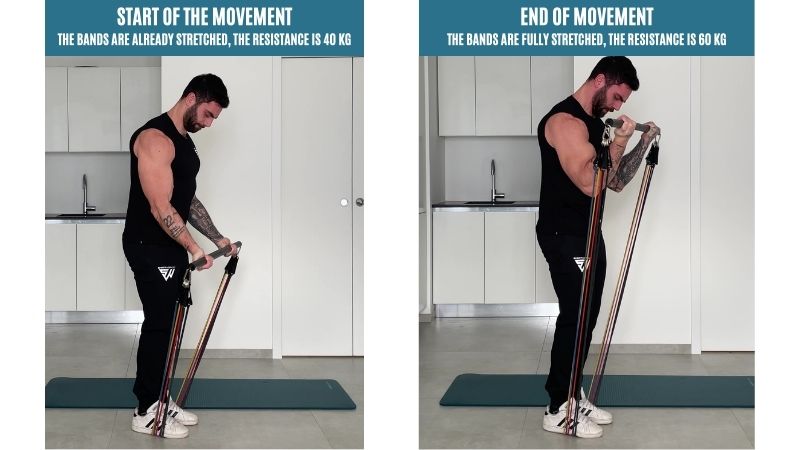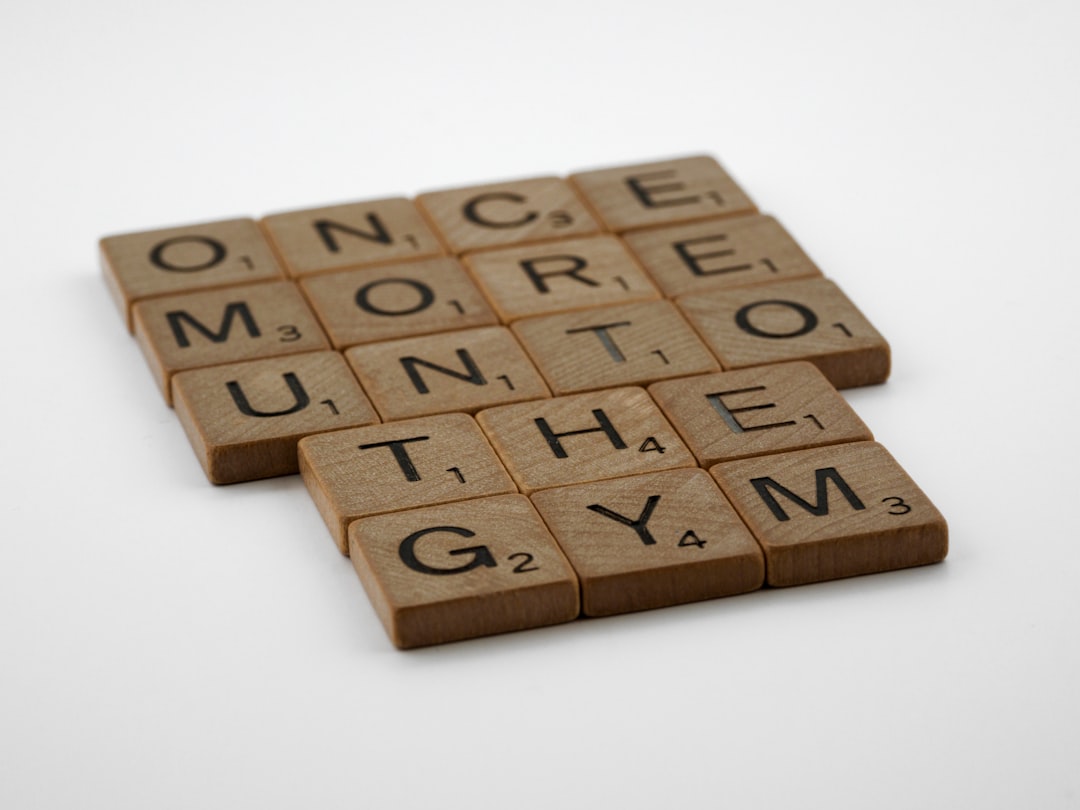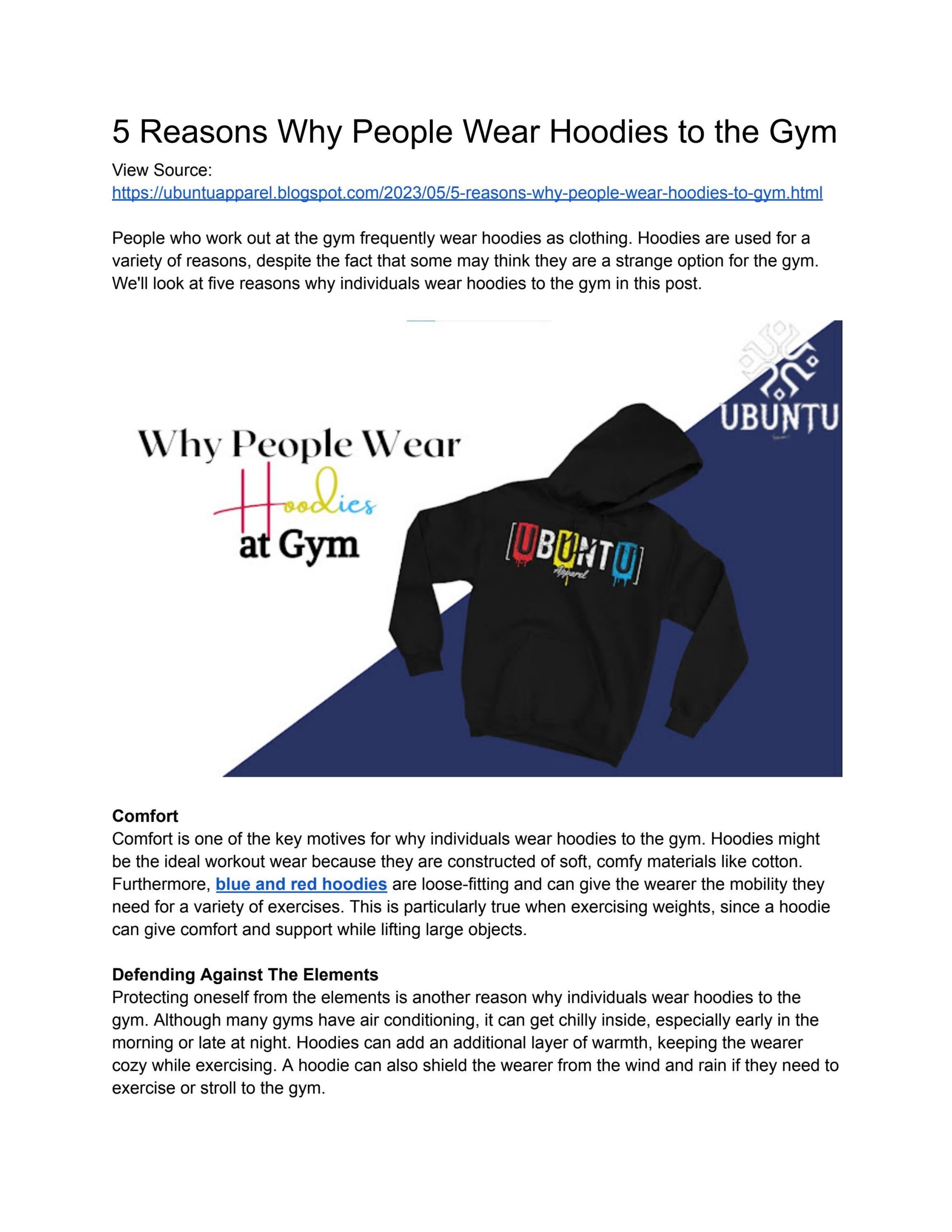Imagine achieving your fitness goals without a gym membership or hefty equipment. Sounds intriguing, right?
If you’ve ever wondered whether you can build muscle with resistance bands, you’re not alone. Many fitness enthusiasts are turning to these colorful, stretchy bands to sculpt and tone their bodies. But can they really deliver the muscle-building results you’re looking for?
You might be surprised at what science and real-world experiences reveal about their effectiveness. Keep reading to discover how resistance bands can fit into your fitness routine and help you build the muscle you desire, all while adding convenience and versatility to your workouts. Let’s dive into the potential of these compact yet powerful tools and see how they can transform your strength training approach.

Credit: www.youtube.com
Benefits Of Resistance Bands
Resistance bands offer unique benefits for building muscle. They are not just tools for stretching. These bands can enhance your workout routine. Many people find them helpful and effective.
Portability And Convenience
Resistance bands are lightweight and easy to pack. They fit in any bag. This makes them perfect for travel. You can work out anywhere. At home, in the park, or on a trip. No need for heavy equipment.
Versatility In Workouts
These bands can target different muscles. Use them for arms, legs, or core exercises. They suit beginners and pros alike. Adjust the resistance level with ease. This makes them adaptable for various workout routines.
Joint-friendly Exercise
Resistance bands are gentle on joints. They provide smooth resistance. This reduces strain on joints. Perfect for those with joint concerns. They offer safe and effective muscle building options.
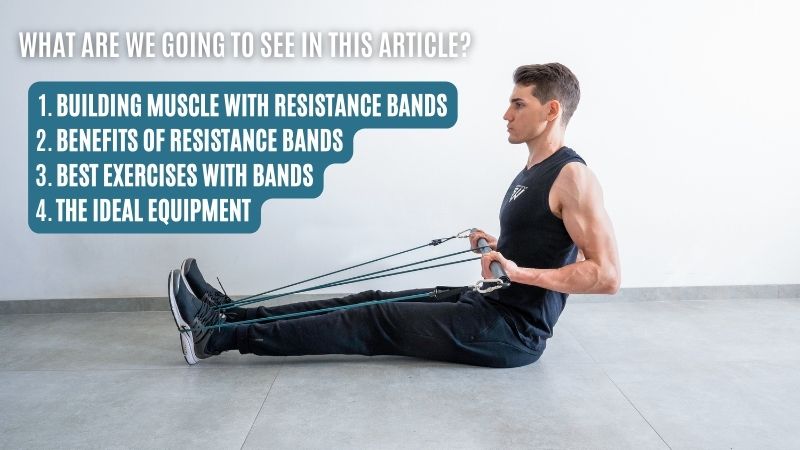
Credit: en.smartworkout-pro.com
Science Behind Muscle Growth
The science behind muscle growth is fascinating. It’s not just about lifting heavy weights. Muscle growth involves a complex process. It requires the right stimulus and conditions. This process can occur with resistance bands too. Let’s dive deeper into the science.
Muscle Hypertrophy Explained
Muscle hypertrophy is the increase in muscle size. It happens when muscles experience stress. This stress causes tiny tears in muscle fibers. The body repairs these fibers. During repair, fibers become thicker and stronger. This leads to muscle growth.
Resistance bands can provide this necessary stress. They create tension that challenges muscles. Over time, with consistent use, muscle hypertrophy occurs. This explains how muscles grow with resistance exercises.
Resistance Bands And Tension
Resistance bands are elastic and stretchable. They offer varying levels of tension. This tension is crucial for muscle growth. It mimics the stress provided by weights. As you stretch the band, tension increases. This increasing tension challenges muscles differently.
Unlike traditional weights, resistance bands offer constant tension. This keeps muscles engaged throughout the exercise. Constant tension can lead to significant muscle activation. It ensures muscles work hard during every phase of movement.
This engagement is key for muscle growth. Resistance bands also promote a full range of motion. This enhances muscle strength and flexibility. They are versatile and convenient for workouts anywhere. With proper use, bands effectively support muscle growth.
Effective Resistance Band Exercises
Resistance bands offer a versatile and effective way to build muscle. They cater to people of all fitness levels and are compact for home use. These bands provide constant tension, enhancing muscle growth and strength. Discover effective exercises to maximize your resistance band workouts.
Upper Body Workouts
Resistance bands can target various upper body muscles efficiently. For bicep curls, stand on the band, gripping handles with palms facing up. Slowly curl the band upward, squeezing your biceps. Tricep extensions are great for back arm strength. Hold the band behind your head and extend your arms. Keep elbows close for maximum tension.
Push-ups with resistance bands offer more intensity. Wrap the band around your back and hold the ends under your hands. Perform regular push-ups, feeling increased resistance as you rise. Shoulder presses require standing on the band, holding handles at shoulder height. Press upwards to engage shoulders and triceps.
Lower Body Workouts
Resistance bands provide a great workout for the lower body. Squats become more challenging with bands. Step on the band, holding handles by your shoulders. Lower into a squat, keeping your back straight and knees aligned. Lunges are perfect for leg muscles. Anchor the band under one foot and hold handles in each hand. Step forward into a lunge, keeping your front knee over your ankle.
For glute bridges, lie on your back with the band around your thighs. Lift your hips, squeezing your glutes. Bands add extra tension, enhancing muscle engagement. Leg extensions are effective for quadriceps. Secure the band around a stable object and loop it around your ankle. Extend your leg forward, focusing on controlled movement.
Core Strengthening Routines
Resistance bands enhance core workouts by adding stability challenges. Russian twists engage obliques effectively. Sit on the ground, holding the band in both hands. Twist your torso side to side, keeping your feet elevated. Planks with band provide extra core stability. Wrap the band around your wrists and assume plank position. Maintain a straight line from head to heels, feeling the band tension.
For standing rotations, anchor the band at waist height. Hold the handle in both hands, standing sideways to the anchor. Rotate your torso, engaging core muscles. Bicycle crunches can be intensified with bands. Loop the band around your feet, lying on your back. Perform crunches, feeling extra resistance during leg extensions.
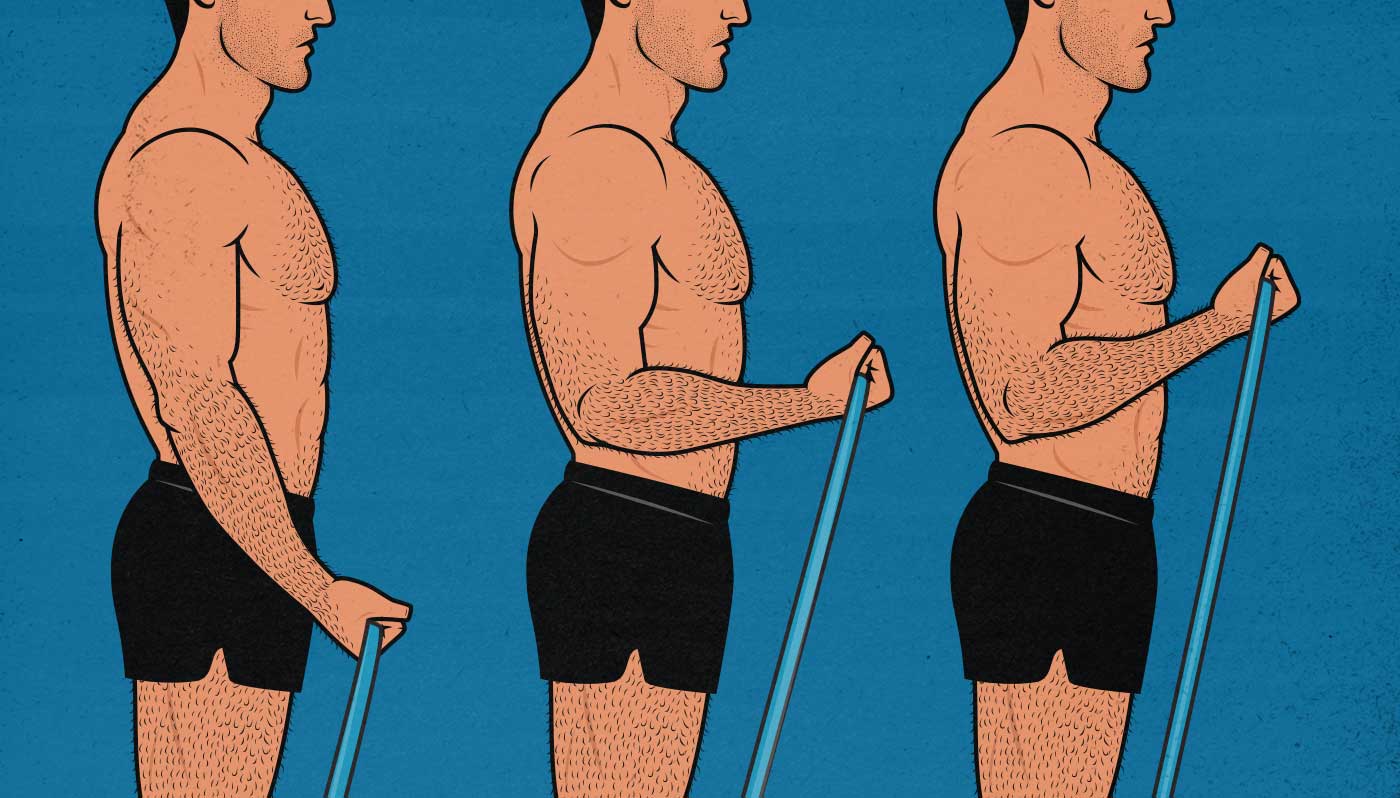
Credit: bonytobeastly.com
Techniques To Maximize Results
Building muscle with resistance bands is effective with proper techniques. Focus on controlled movements to engage muscles fully. Varying band tension and exercises ensures continuous muscle growth and strength enhancement.
Building muscle with resistance bands can be incredibly effective, but knowing the right techniques is crucial. You might think that without heavy weights, you’re at a disadvantage. However, resistance bands offer unique benefits that, when used correctly, can significantly boost your muscle-building efforts. Let’s dive into the techniques that can help you make the most out of your workouts.Progressive Overload With Bands
Progressive overload is essential for muscle growth, and yes, you can achieve this with resistance bands. Start with a band that challenges you but allows you to complete a set with good form. Gradually, move to a band with more resistance, or add extra reps to your routine. If you feel your progress stalling, mix up your routine. Use different exercises targeting the same muscle group. This keeps your muscles guessing and growing.Proper Form And Technique
Using proper form is non-negotiable if you want results. It’s easy to slack on form with bands, thinking they’re less intense than weights. But this can lead to injuries and hinder your progress. Focus on controlled movements. Ensure your posture is correct and that you’re engaging the right muscles. This not only maximizes muscle engagement but also prevents unnecessary strain.Incorporating Variations
Variety is the spice of life—and workouts! Don’t let your routine get stale. Adding variations can target different muscle fibers and keep your sessions interesting. For instance, try squats with a band around your knees, or perform chest presses lying on your back. These small changes can lead to significant improvements. Have you tried alternating banded rows with lateral raises? This challenges your muscles in new ways. Remember, the key to success with resistance bands lies in creativity and consistency. Are you ready to take your muscle-building journey to the next level?Combining Bands With Other Equipment
Resistance bands work well with other equipment for muscle growth. Pair them with weights for added resistance and variety. Use bands alongside bodyweight exercises to enhance strength-building routines.
Combining resistance bands with other equipment can take your workout to new heights. Bands are versatile and can complement various fitness tools, making them an excellent choice for those looking to build muscle efficiently. You might be wondering how to maximize your gains by blending these stretchy tools with more traditional equipment. Let’s dive into some practical ways to do just that.Supplementing With Free Weights
Adding free weights to your resistance band routine can amplify your muscle-building efforts. Imagine doing bicep curls with a dumbbell in one hand and a resistance band in the other. This combination challenges your muscles differently, promoting growth and strength. Think about how much more intense your squat routine can become when you use bands alongside a barbell. The bands add tension at the peak of the lift, demanding more from your muscles.Integrating Cardio Workouts
Resistance bands are not just for strength training. You can incorporate them into your cardio workouts too. Ever tried shadowboxing with bands? They add resistance, making your punches more powerful and your heart pump harder. Consider adding bands to your jumping jacks or mountain climbers. This extra resistance can turn a simple cardio routine into a muscle-toning powerhouse. Mixing bands with cardio can help you burn calories and build muscle simultaneously. Isn’t it exciting to know you can enhance your endurance while toning up? Combining different equipment can keep your workouts fresh and challenging. What new routines could you create with bands and other tools?Common Mistakes To Avoid
Using resistance bands can build muscle, but avoid using incorrect form. Don’t underestimate their potential by choosing bands that are too easy. Consistency is key, so don’t skip workouts expecting fast results.
Building muscle with resistance bands is effective, but common mistakes can hinder your progress. Avoiding these mistakes will help you get the most out of your workouts and achieve your fitness goals faster. Let’s dive into some pitfalls to watch out for on your muscle-building journey.Incorrect Band Selection
Choosing the right resistance band is crucial. Many people either choose bands that are too light or too heavy for their strength level. A band that’s too light won’t challenge your muscles, while one that’s too heavy can lead to poor form and potential injury. Consider your current fitness level and the specific muscle group you want to target. If you’re unsure, start with a medium resistance band and adjust based on your comfort and progress.Neglecting Warm-up And Cool Down
Skipping the warm-up is a common mistake that many make. Jumping straight into intense workouts can lead to strains or injuries. A simple warm-up of dynamic stretches or light cardio for five minutes can prepare your muscles for the workout ahead. After your workout, cooling down is just as important. It helps in reducing muscle soreness and improving flexibility. Spend a few minutes stretching all major muscle groups to keep your body in top shape. Have you ever rushed through a workout only to feel sore for days? That’s likely due to ignoring proper warm-up and cool-down routines. Prioritize these steps, and you’ll notice better recovery and improved performance.Tracking Progress And Setting Goals
Building muscle with resistance bands requires tracking your progress and setting clear goals. Regularly assess your strength and adjust exercises to challenge your muscles effectively. Aim for consistent improvement and monitor changes to stay motivated.
Tracking your progress and setting goals is crucial when building muscle with resistance bands. Without a clear roadmap, you might find yourself stuck in a rut, unsure if you’re making headway. Setting specific goals and tracking your progress will keep you motivated and ensure you’re on the right path. But how exactly should you go about this? Let’s break it down with practical steps and insights.Measuring Muscle Growth
Assessing muscle growth with resistance bands requires a bit of creativity. Unlike weights, where you can simply add more plates to see progress, resistance bands need different markers. Use a tape measure to record the circumference of key muscles like your biceps, chest, and thighs. Track these measurements every few weeks to see tangible growth. Pay attention to strength gains. Can you perform more reps or hold the resistance longer? This is a clear sign your muscles are strengthening. Take progress photos. Capture images every month to visually assess changes. Sometimes the mirror doesn’t tell the full story, but side-by-side photos do.Adjusting Workout Plans
To keep progressing with resistance bands, you need to adjust your workout plans regularly. This doesn’t mean overhauling your entire routine every week but making small tweaks that lead to big results. Increase the resistance level by using bands with higher tension or combining bands for added challenge. Your muscles will adapt to the same resistance over time, so keep them guessing. Switch up your exercises to target muscles from different angles. This not only prevents boredom but also engages different muscle fibers, promoting balanced growth. Set short-term goals alongside your long-term objectives. If your goal is to do 15 push-ups with a resistance band around your back, start by aiming for 8, then 10, and gradually increase. This approach keeps you focused and driven. Are you consistently pushing yourself beyond your comfort zone? Progress isn’t always linear, but dedication coupled with the right strategy will lead you to your muscle-building goals. How will you track your progress and make necessary adjustments to your resistance band workouts? Your answers hold the key to unlocking your fitness potential.Frequently Asked Questions
Can I Replace My Gym With Resistance Bands?
Yes, you can replace the gym with resistance bands for strength training. They provide effective workouts, improving muscle tone and flexibility. Ensure proper form and gradually increase resistance to match your fitness level. Combine with cardio for a balanced routine.
What Builds Muscle Faster, Weights Or Resistance Bands?
Weights typically build muscle faster due to heavier loads and increased resistance. Resistance bands offer versatility and convenience, beneficial for muscle endurance. Combining both can optimize muscle growth and fitness results.
What Are The Disadvantages Of Resistance Bands?
Resistance bands can offer limited resistance compared to weights. They may wear out quickly and lose elasticity. Precise control is challenging due to variable tension. Proper form is crucial to avoid injury. Some exercises may be restricted by length or strength of the bands.
Can You Really Get A Good Workout With Resistance Bands?
Yes, resistance bands provide an effective workout. They improve strength, flexibility, and muscle tone. Perfect for all fitness levels, they offer versatile exercises and are portable.
Conclusion
Muscle growth with resistance bands is possible. They offer effective strength training. These bands are easy to use at home or the gym. Perfect for beginners and advanced users alike. They increase muscle endurance and flexibility. Consistent workouts bring great results.
Plus, they are affordable and portable. No need for bulky equipment. Just a little space is enough. Remember to maintain proper form. Safety is key to prevent injuries. Start slowly and progress gradually. With dedication, bands can enhance your muscle-building journey.
So, why not give them a try?


